I’ve been asked how I prepare tea bag papers for use in projects and thought I’d make a small how-to. Here goes:
1. Save used tea bags – I let mine dry and keep them in a plastic bag until I’m ready to work on a batch. If they are dry you can just rewet them. I just soak them in a small plastic tub for a min or two. (You can buy tea bag paper online but I like the look and tones of the used bags. And they’re free – I drink a lot of tea.)
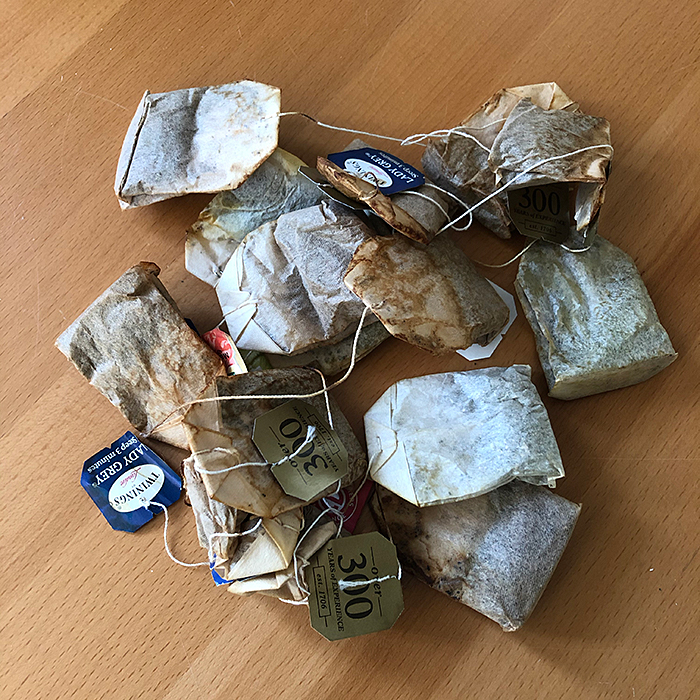
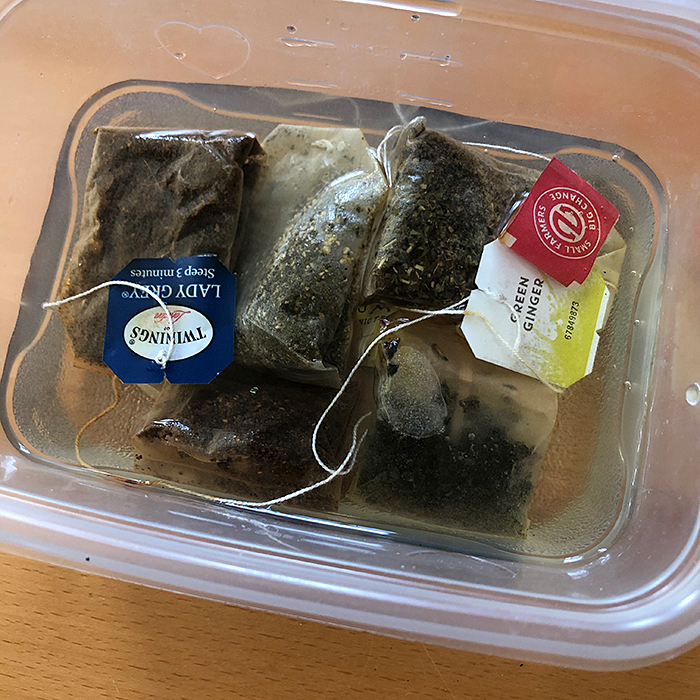
Dried Tea Bags and Soaking Tea Bags
2. Carefully snip where strings are attached and remove tea tags. (one brand uses little staples to attach the string which is a bit more tedious to remove with out damaging the paper. BUT, sometimes a tear here or there will add texture to a project.) I save the tags as sometimes I’ve used them in a project. I work on a paper towel.
3. Carefully unfold the wet bags without tearing. (If hot, allow to cool.)
Most tea bags are made from rectangular paper, folded down the center after the tea is added, then folded in half cross wise with open edge corners folded and the tag attached. I have run into tricky bags – circular, or two squares crimped together and they wouldn’t work this way but who knows, they might have other uses.
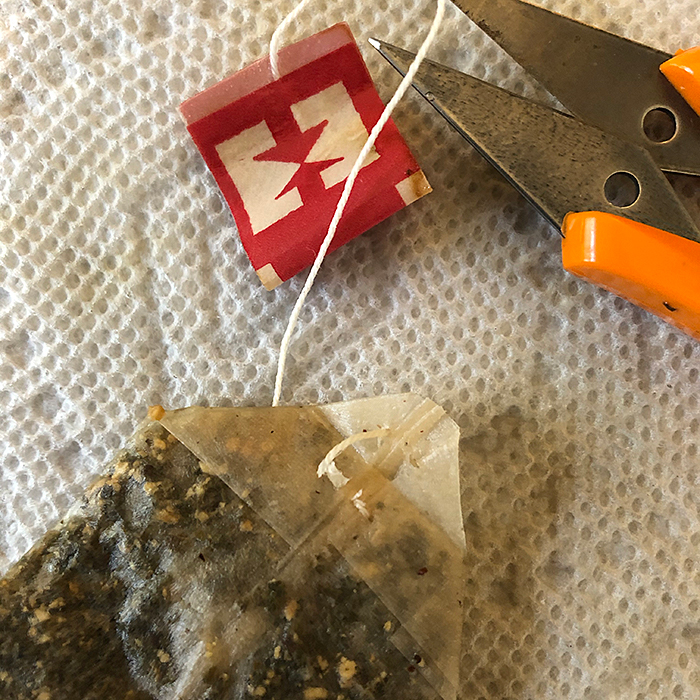
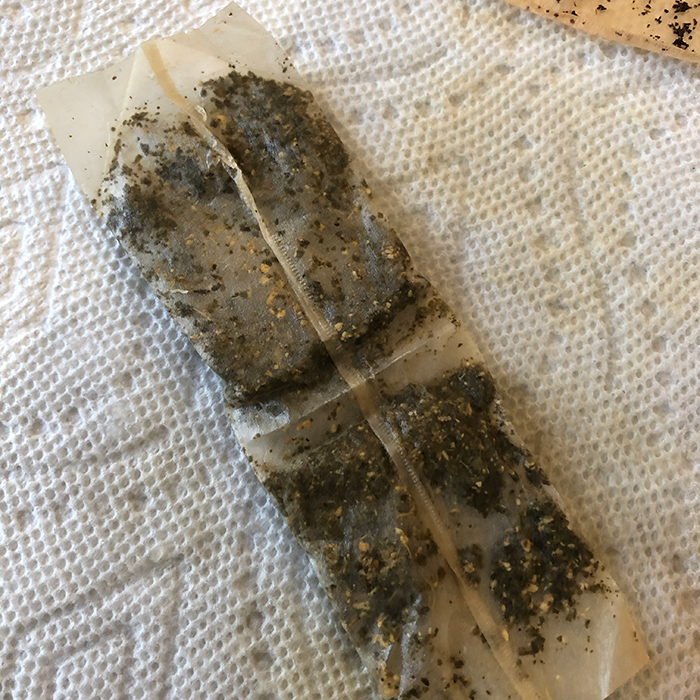
Remove tag and unfold
4. Discard the used tea, rinse carefully under running water, and lay flat to dry. (You may notice I use the word carefully a lot – there is a reason!)
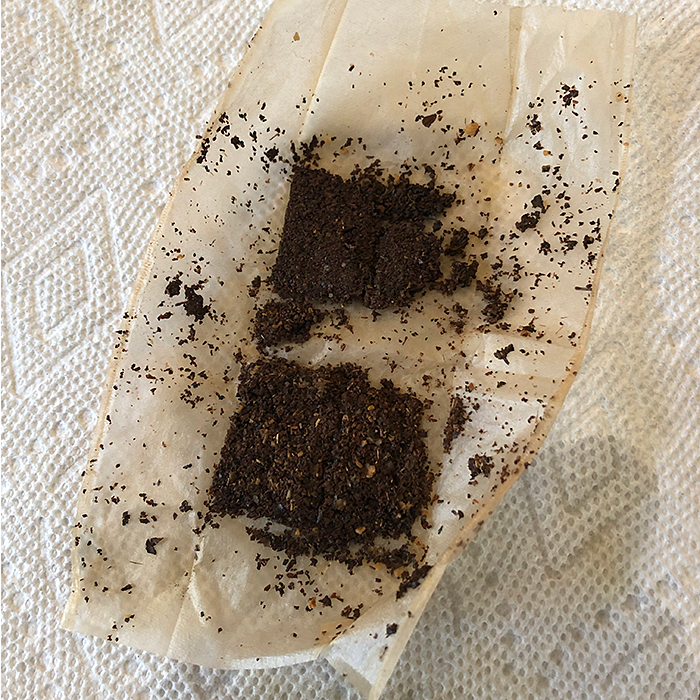
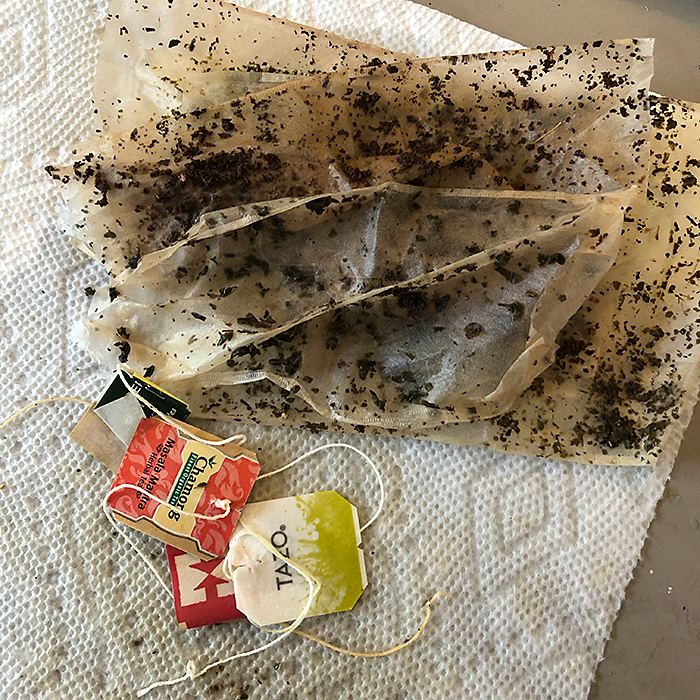
Open paper with tea and pile of empty papers ready to rinse.
5. You can lay rusty objects on top while drying to make marks if you wish and wet with fresh tea, or gently place in a dye bath to adjust colors. (The ones shown here do not have any additional dying treatments.)
6. I usually save a number of used bags and do a batch of 6 or 10 at once. This works for me but you could do them one by one or lots more at once. Once I have a dried number of sheets I can begin a project. (The ones drying in the image below are stained by the various teas they contained.)
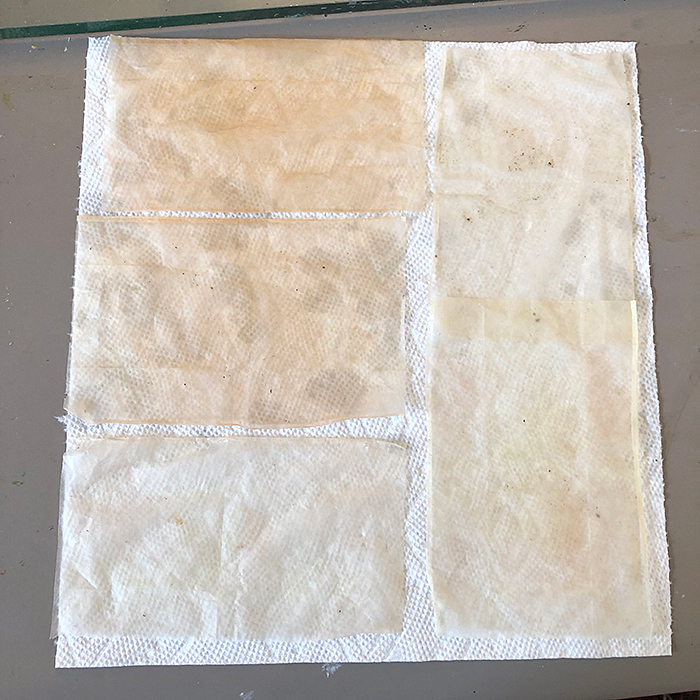
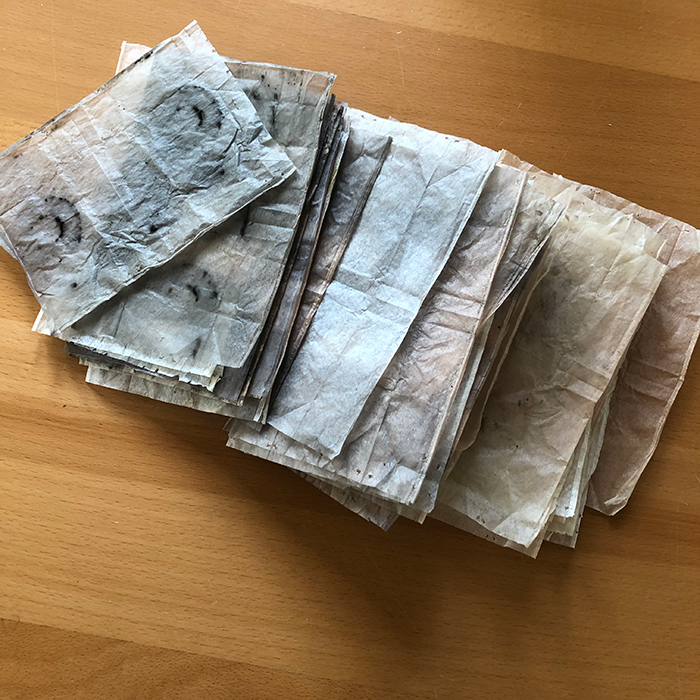
Drying papers and my stash
I prefer to work in a serendipitous manner and take advantage of whatever happens. If you like more control you could take notes as you work and adjust batches as you observe what happens. Your tea, water in your area, length of time in a dye bath, etc. all can affect the results.
